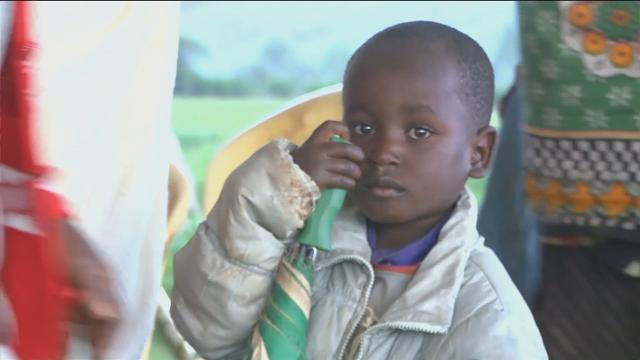A search and rescue operation is under way in Kenya after a deadly dam collapse, which killed at least 50 people with dozens more still missing.
Water burst through the banks of the Patel Dam in Kenya’s Rift Valley, about 150km north of the capital Nairobi, on Wednesday night, washing away almost an entire village.
With the death toll expected to rise, according to officials, rescuers continued their search for survivors on Friday.
“The area of search is a long stretch from the dam area downstream,” Pius Masaai, spokesman for the National Disaster Unit, said.
“We are also looking for the families of those missing and we have opened a tracing desk,” he told Al Jazeera.
Extent of the damage
According to Kenya’s Red Cross, which along with the Nakura County disaster management teams rescued 41 people from under the mud on Thursday, close to 500 families have been displaced from the disaster in Solai town and the expansive Nyakinyua Farm.
“These families will need long-term assistance by both government and other humanitarian players,” said Abbas Gullet, Secretary-General of the Kenya Red Cross, in a statement.
It was a sea of water. My neighbour was killed when the water smashed through the wall of his house. He was blind, so he could not run. They found his body in the morning
VERONICA WANJIKU NGIGI, SURVIVOR
More than 20 of those found dead were children, according to sources at the Nakura County Health Ministry.
“Some of the pictures we’ve seen so far, we can’t broadcast, but children, who are the weakest are the major victims in all of this,” said Al Jazeera’s Andrew Simmon, reporting from nearby Dadaab in Garissa County.
Victims and survivors came back to assess the extent of the damage to their homes and search for relatives.
“It was a sea of water. My neighbour was killed when the water smashed through the wall of his house. He was blind, so he could not run. They found his body in the morning,” said Veronica Wanjiku Ngigi.
“My other neighbours also died. All our houses have been ruined,” the 67-year-old survivor told Reuters news agency.
Charles Kimono lost his 50-year-old sister Nancy Muna on Wednesday.
“We heard about the flooding, came to look for my sister; we looked everywhere,” he told Al Jazeera. “We only found her body hours after the water receded.”
Bernard Mankato, who works at a village clinic, tried in vain to clear the debris.
“I lived here with my colleagues, there were many houses around us and this is where many people were swept away,” he told Al Jazeera.
Safety standards
Patel Dam is one of seven dams in the region owned by a private farm.
Its main purpose was to irrigate the large flower farm, which also exports macadamian nuts, coffee, fruits and other crops.
Kenya’s public prosecutor has ordered the chief of police to launch an investigation into the accident and submit a written interim report within two weeks.
After the disaster on Wednesday, other dams in the region are now also being assessed.
| A child walks in his house, which was partly destroyed by flooding water in Solio town [Thomas Mukoya/Reuters] |
The farm was subject to investigation, deemed unsafe and ordered to close by the water resources authority, according to local media reports, Al Jazeera’s Simmons said.
“Local people were against this reservoir being built in the first place because of the safety standards,” he added.
Heavy seasonal rains and flooding since March have led to the deaths of 158 people with 80 injuries recorded countrywide, the Red Cross said.
“This tragedy has really brought it home how dangerous the continuing rainfall is for Kenyans right across the country,” said Al Jazeera’s Simmons.
“The heavy rains are the worst for two decades and it proves beyond all reasonable doubt that the infrastructure of this country simply can’t cope,” he added.
The floods to date have left more than 225,000 displaced, according to the government.
“The effects of the floods countrywide has now reached a proportion of a national disaster and its severity will be seen when the rains are over,” said Gullet of Red Cross.
AL Jazeera





